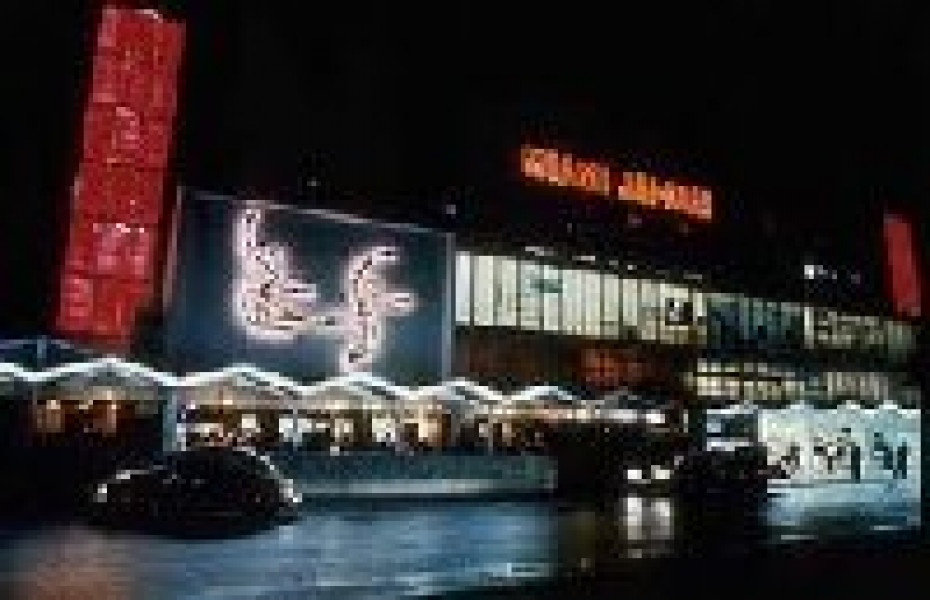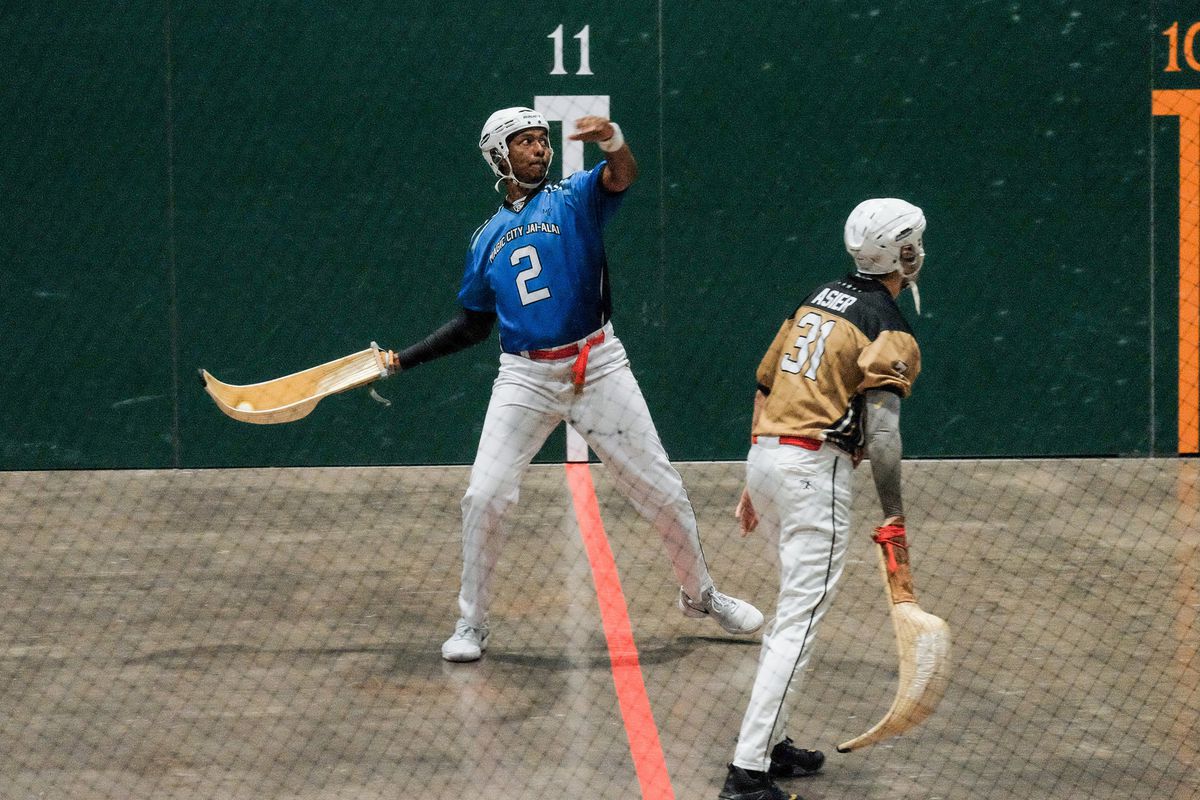Jai Alai Casino Hialeah
Jai-Alai is a centuries old sport from Basque country of Spain and France. Translated the words mean “Merry Festival.” Jai-Alai came to the United States in 1904 with the first permanent facility (“fronton”) opening in Florida in 1924. The Jai Alai fronton is in various stages of disrepair, but the adjoining casino is kept in great shape. Drinks are also cheap at the casino bar, which can be then be walked over to the fronton. Jai Alai matches last about 10-15min each, and we watched about 3 until we felt confident that we understood the rules and gameplay.
Jai-alai was huge in Miami in the 1980s, drawing crowds 15,000 strong to come bet on players hurling pelotas at more than 100 miles per hour.

Today the two remaining jai-alai venues in South Florida can barely fill a 500-seat stadium. But while the popularity is waning, the allure endures. We wanted to explore.
We went to learn a bit about how jai-alai works from the man who knows it best: Benjamin “Benny” Bueno, a Miami native and former professional player jai-alai player. He’s the current player manager at The Casino at Dania Beach.
Jai-alai goes back hundreds of years. It was first played in the Basque region of Spain in the 1800s, usually on Sundays and on holidays, which is why the name literally translates to merry festival.
Jai Alai Casino Miami

While it started out simply as an outdoor handball game, soon cestas or handheld baskets were added and the game moved indoors into what’s called a fronton.
The game spread to Spanish speaking countries all over Latin America and eventually found its way to America in 1904. It was played for the first time in the states at the St. Louis World’s Fair.
The first professional fronton was built in Miami-Dade at the site of the current Hialeah Race Course, but then was moved to Casino Miami in 1926, which is where Miami Jai-Alai is still played today. Jai-alai frontons were built all over the Eastern Seaboard.
In 1934, it was legalized for something called pari-mutuel gambling — the same type of gambling at horse races. Jai-alai’s heyday was in the 1970s and 1980s in the United States, and Miami was the epicenter of it all. Games would routinely draw crowds 15,000 strong in the stadium at Miami Jai Alai.
By the 1980s, upper management was making millions, but players rarely saw those profits. Off of the court, tensions rose, according to the ESPN short, “What the Hell Happened to Jai-Alai.”
Players wanted to start a union and embarked on a three-year strike demanding better working conditions. Amateur replacements were brought out and attendance started to dwindle. Around the same time, the rise of ESPN and other televised sports in the 1980s led to jai-alai’s slow demise.
Casino Miami and The Casino at Dania Beach are two places where you can still see jai-alai games year-round. While it’s played almost every day at these two frontons, the sport struggles to fill a 500-seat stadium.
Still, in just a few weeks, John Brunetti, the owner of the casino and horse racing track Hialeah Park, will be opening a jai-alai fronton in Florida City, which could bring a new life both to the impoverished city and the sport.

Here’s how the game works.
The court is set up with three walls, which players can bounce the ball off of. The fourth wall is open to the audience, which makes it a really easy viewing experience.
The player serves the ball using a cesta, or a handmade basket. These cost anywhere between $300 and $700, and are repaired daily by a weaver on staff. Players tie the cesta to their right hand using a long, fabric string called a cinta.
Ball is called a “pelota.” It’s made from solid rubber on the inside and wrapped in goatskin on the outside. Because the balls are very hard, players must wear helmets.
There are eight teams, made up either of singles or doubles. Player one serves and two has to catch and send the ball back to the wall. You can score a point in a few ways: if the serve is faulty, the opponent doesn’t catch the ball after one bounce, the opponent holds or juggles the ball, or the opponent puts the ball out of bounds.
The first person or team to score a point wins that round. They face the next player or team of players. The first player or team to get to 7 points wins.
There are a bunch of different types of shots. People really like to yell ‘em out, so if you hear someone yelling out a word like “chula,” it means they’re impressed by the shot a player took which hits the crack between the back wall and the floor. It causes the ball to roll flat, making a return impossible.
You also might hear fans yelling out the word “mucho,” which is Jai-Alai’s equivalent of Ole! In bullfighting. It basically just means “nice one.”
Jai Alai Casino Hialeah Entertainment
The games are totally free just to watch, but gambling bets usually start at $2 a pop.
Jai Alai Casino Hialeah Fl
There are two places to catch a game:
Miami Jai-Alai
Where: Casino Miami, 3500 NW 37th Ave, Miami, FL 33142
When: Monday to Saturday, 12 p.m., Sundays, 1 p.m., Tuesdays Closed
Dania Jai-Alai
Where: The Casino @ Dania Beach, 301 E Dania Beach Blvd, Dania Beach, FL 33004
When: (The season re-starts May 2) Monday to Saturday, 8 p.m., Tuesdays and Saturdays there’s an additional show at 3 p.m.